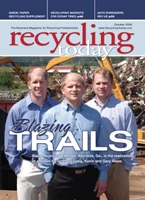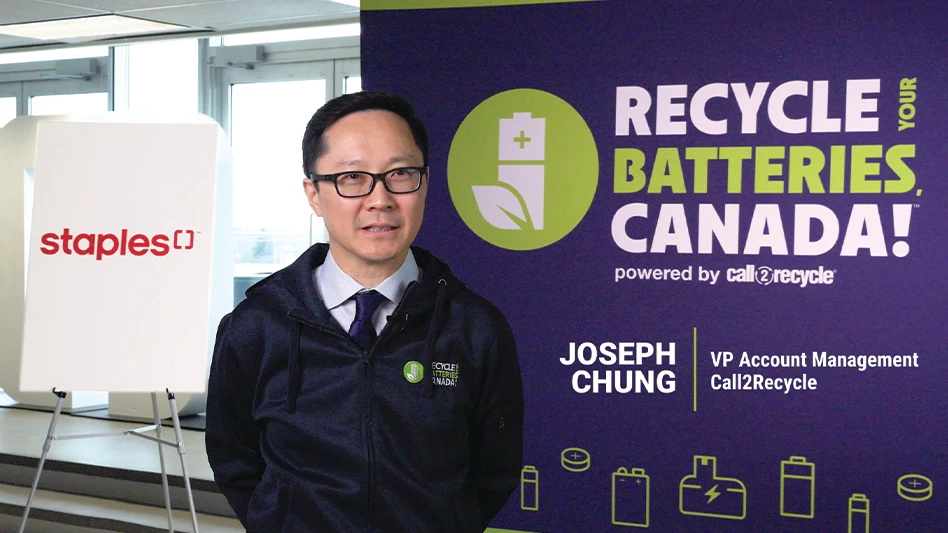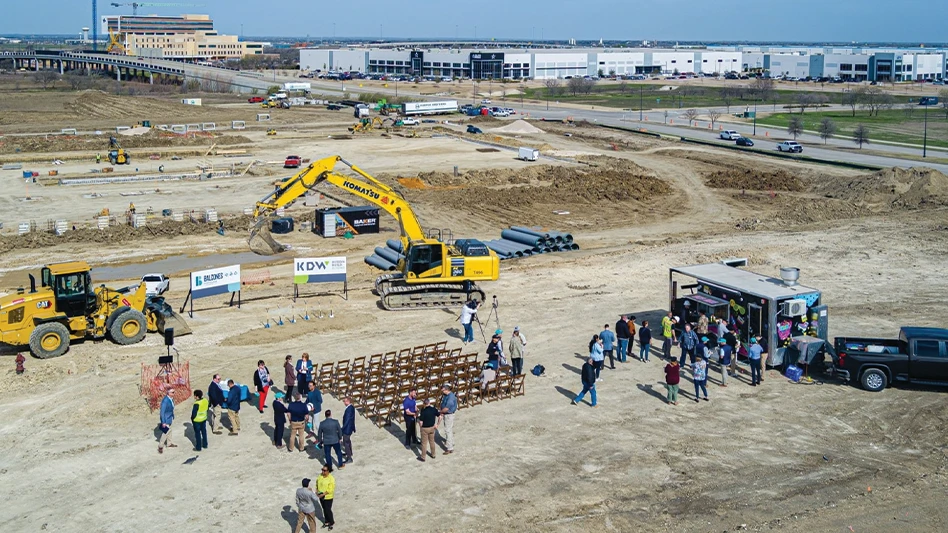What the average worker might not realize when he or she drops that discarded memo in an office recycling bin is that recycling is big business. That piece of paper is a valuable commodity with price fluctuations watched by the hawkish eyes of traders around the world. While everyday people might not see dollar signs in a bin of old paper, recyclers certainly do, and two big industry names are turning such scrap paper into cash for a good cause.
Steel giant Mittal Steel USA has joined the Abitibi Paper Retriever program—a fundraising initiative developed by Abitibi-Consolidated, based in Montreal, often used by non-profit community organizations, churches and schools. However, the private sector is no stranger to the program.
A total of six Abitibi Paper Retrievers are spread throughout the parking lots at the Mittal Indiana Harbor mill in East Chicago, Ind., the proceeds of which are going to benefit the American Heart Association, a longtime focus of fundraising activities at Mittal’s Indiana Harbor location, according to Dan Cornillie, manager—marine and raw material logistics at Mittal Steel USA.
PAPER CHASE
The program will mark its one-year anniversary in November, and the company has no intention of stopping, Cornillie says. "We intend to keep building on it—there’s definitely potential for more," he says.
The mill’s office paper comprises the majority of the material collected, although newspapers, magazines and junk mail also find their way into the mix thanks to the plant’s 6,000-plus employees who bring in their recyclable paper from home. A small amount of OCC (old corrugated cardboard) is also collected, says Kevin Rush, area manager of the Abitibi Paper Retriever program for the Chicago market. "It’s a good mix," Rush says of the kinds of paper collected.
Between the start of the program in November 2005 and July 2006, nearly 14 tons of paper have been recovered, according to Cornillie. Like all the Paper Retriever sites, the Mittal mill’s Paper Retriever containers are weighed by a scale on the collection truck when Abitibi picks them up—about once every two weeks in the case of the Indiana Harbor mill, says Rush.
Each container is designed to collect all kinds of paper to make the process more convenient for the program’s participants, so the material is sent to a sorting facility before it goes off to the company’s newsprint and paper mills, says Rush.
Paper Retrievers dot the parking lots of companies, schools and organizations across the United States. More than $3.5 million will be paid out to participating organizations this year alone, according to statistics on Abitibi Paper Retriever’s Web site www.paperretriever.com.
The funds Abitibi issues for the paper collected at Mittal Indiana Harbor go directly to the American Heart Association, a charity handpicked by the company. "It’s a cause everybody can relate to," Cornillie says, a sentiment echoed by statistics on the Heart Association’s Web site www.americanheart.org. There, the association names cardiovascular disease as the leading cause of death in the United States.
Cornillie adds that all of Mittal’s Lake Michigan locations have a long-standing fundraising relationship with the American Heart Association. "It’s been a focus here of several different fund raising activities," he says.
Joining the Paper Retriever program was a natural extension of the plant’s recycling activities, according to Cornillie. "Steel companies try to build as much recycling as possible in the process [of doing business]," he says. Cornillie adds that Mittal’s Indiana Harbor mill had not had an office paper recycling program in recent years, so the Abitibi Paper Retriever program accomplished two goals simultaneously.
Participation so far has indicated that the program has a strong future at the Mittal mill.
STEEL RESOLVE
Cornillie says employee response has been enthusiastic, so he sees many opportunities to grow the program at Indiana Harbor.
Sponsored Content
Labor that Works
With 25 years of experience, Leadpoint delivers cost-effective workforce solutions tailored to your needs. We handle the recruiting, hiring, training, and onboarding to deliver stable, productive, and safety-focused teams. Our commitment to safety and quality ensures peace of mind with a reliable workforce that helps you achieve your goals.
He says that word about the program has been primarily spread throughout the company via simple internal communications like inter-office e-mail, which makes alerting employees to the program and getting them involved easy.
The response has been so positive, Cornillie says, that he’s been approached by employees asking about adding more Paper Retrievers so the collection boxes can be placed at additional locations closer to them.
Cornillie says that the goal at Indiana Harbor is to continue increasing the capture rate, which will result in more Paper Retrievers to meet such demand. "When we get more tons, we can earn more Retrievers," he says. "The more we earn, the closer we can put them to the point of generation, and the more we capture, the more we can spiral the [program] up."
The author is associate editor of Recycling Today and can be contacted at jgubeno@gie.net.
Get curated news on YOUR industry.
Enter your email to receive our newsletters.

Explore the October 2006 Issue
Check out more from this issue and find your next story to read.
Latest from Recycling Today
- Recycled steel price crosses $500 per ton threshold
- Smithers report looks at PCR plastic’s near-term prospects
- Plastics association quantifies US-EU trade dispute impacts
- Nucor expects slimmer profits in early 2025
- CP Group announces new senior vice president
- APR publishes Design Guide in French
- AmSty recorded first sales of PolyRenew Styrene in 2024
- PRE says EU’s plastic recycling industry at a breaking point







